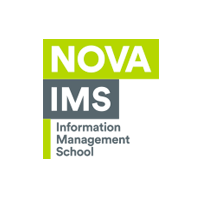What is GeoMundus?
GeoMundus is a free international symposium organised by the students from the Erasmus Mundus Master's of Science in Geospatial Technologies. The symposium features broad aspects of geospatial technologies disciplines, including but not limited to, geographic information systems and science, environmental studies and management, urban planning and many more. The focus of this year’s GeoMundus is the emerging technologies within these fields and our programme highlights the cutting edge research that pushes the boundaries of geospatial analysis.
Why GeoMundus?
It is an opportunity to learn and share scientific research, knowledge and skills with other peers in all things ‘Geo’. The emerging technologies featured in GeoMundus 2017 also presents an opportunity to learn about them and their applications in our everyday lives. GeoMundus is unique as it features workshops where participants can experience first-hand the future of geospatial technologies as well as a career session specially designed for students interested in a geospatial career.
Who should participate in GeoMundus 2017?
Everyone who is curious about geospatial technologies and its applications. We especially welcome students, researchers, industry players, and even members of the public. It is not only a great opportunity to learn, but also to network amongst the brightest minds in this exciting field.
Registration is free so sign up now!





.jpg)
.jpg)
.jpg)
.jpg)
.jpg)
.jpg)
.jpg)
.jpg)





 Caitlin Thorn
Caitlin Thorn Mahesh Thapa
Mahesh Thapa Nikolina Nisic
Nikolina Nisic Bikesh Twanabasu
Bikesh Twanabasu Ditsuhi Iskandaryan
Ditsuhi Iskandaryan Leon Gaw
Leon Gaw Raquel Martin-Pozuelo Ojalbo
Raquel Martin-Pozuelo Ojalbo Stravros Sakellariou
Stravros Sakellariou
 Pravesh Yogol
Pravesh Yogol Sanjeevan Shrestha
Sanjeevan Shrestha Marc Frederic Schröder
Marc Frederic Schröder Pedro Penedos
Pedro Penedos
 Chaplin Williams
Chaplin Williams Gebru Welay
Gebru Welay Anthony Twesigye
Anthony Twesigye  Mulu Weldegebreal
Mulu Weldegebreal
 Daria Lüdtke
Daria Lüdtke Sarah Abdelkader
Sarah Abdelkader Caio Mascarenhas
Caio Mascarenhas
 Lisa Fischell
Lisa Fischell Yevgeniya Litvinova
Yevgeniya Litvinova Muhammad Pramujati
Muhammad Pramujati


